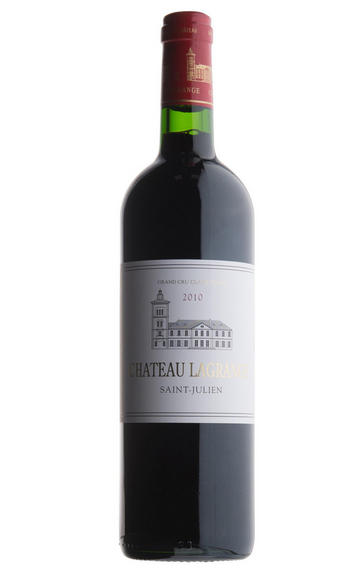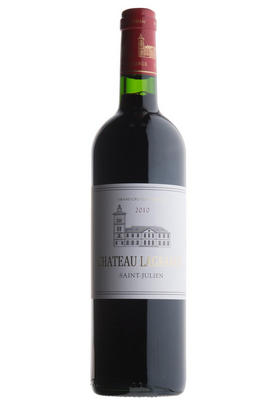
2019 Château Lagrange, St Julien, Bordeaux

Critics reviews
The 2019 Lagrange, which was picked over the longest period ever, has a compelling bouquet of beautifully defined black fruit laced with cedar and light graphite notes. The palate is smooth, fresh and vibrant, with great depth, perfectly judged acidity and a brilliantly focused finish. Winemaker Mathieu Bordes has crafted the best Lagrange in recent years, a benchmark for the estate.
Drink 2025 - 2055
Neal Martin, Vinous (Feb 2022)
A deep, fleshy Saint-Julien, the 2019 Lagrange builds beautifully with time in the glass. Sweet red/purplish berry fruit, rose petal, sage, mint, lavender and cinnamon are finely delineated, and yet this mid-weight Saint-Julien impresses with its super finessed personality. The 2019 is so inviting. It is an especially fine Lagrange. Tasted two times.
Drink 2026 - 2041
Antonio Galloni, vinous.com (Feb 2022)
Inky, glass-staining in colour, this is richly textured and intense, easily rivalling the best ever vintages at the property. Filled with creamy damson and cassis fruit, with a sense of precision and restraint to the frame, held in by fine but plentiful tannins. 30% 1st wine, highest ever Cabenet Sauvignon, 50% new oak for ageing. An exceptional wine, marking 125 years since the founding of Suntory in Japan. Eric Boissenot consultant.
Drink 2027 - 2048
Jane Anson, janeanson.com (Feb 2022)
80% Cabernet Sauvignon, 18% Merlot, 2% Petit Verdot.
Dense crimson. Dried herbs on the nose. Then rich, ripe fruit with some vegy notes on the palate. Harsh, drying finish though.
Jancis Robinson, jancisrobinson.com (Nov 2021)
Pretty and floral with ash and dried earth. Medium-bodied with firm tannins and a fresh, fine-textured finish. Try after 2025.
James Suckling, jamessuckling.com (Jan 2022)
Lovely deep red pink rim to the glass. Such freshness and floral lift on the nose, smells lively and welcoming with a cool blue fruit touch to the aromas alongside faint hints of liquorice. Amazing texture and mouthfeel - filling with a good density of chalky and textured tannins underpinning creamy red fruits with a juicy acidity that is so succulent and mouthwatering. Just giving everything - abundant, generous lively fruit, creamy velvet-textured tannins, bright acidity and gorgeous Cabernet aspects. Round and complete, excellent winemaking on show.
Drink 2023 - 2037
Georgina Hindle, Decanter.com (Jan 2022)
About this WINE

Chateau Lagrange
Château Lagrange was for many years perceived as a tired, underperforming St Julien château that was unworthy of its 3ème Cru Classé status.
In 1983 it was purchased by the Japanese Suntory Group which set about renovating the vineyards and the winery. Lagrange rose to become a model estate and even today few Bordeaux properties can match Lagrange, with its huge barrique chais and its state of the art cuvier with its 56 temperature-controlled, stainless steel cuvées.

St Julien
St Julien is the smallest of the "Big Four" Médoc communes. Although, without any First Growths, St Julien is recognised to be the most consistent of the main communes, with several châteaux turning out impressive wines year after year.
St Julien itself is much more of a village than Pauillac and almost all of the notable properties lie to its south. Its most northerly château is Ch. Léoville Las Cases (whose vineyards actually adjoin those of Latour in Pauillac) but, further south, suitable vineyard land gives way to arable farming and livestock until the Margaux appellation is reached.
The soil is gravelly and finer than that of Pauillac, and without the iron content which gives Pauillac its stature. The homogeneous soils in the vineyards (which extend over a relatively small area of just over 700 hectares) give the commune a unified character.
The wines can be assessed as much by texture as flavour, and there is a sleek, wholesome character to the best. Elegance, harmony and perfect balance and weight, with hints of cassis and cedar, are what epitomise classic St Julien wines. At their very best they combine Margaux’s elegance and refinement with Pauillac’s power and substance.
Ch. Léoville Las Cases produces arguably the most sought-after St Julien, and in any reassessment of the 1855 Classification it would almost certainly warrant being elevated to First Growth status.
Recommended Châteaux: Ch. Léoville Las Cases, Ch.Léoville Barton, Ch Léoville Poyferré, Ch. Ducru-Beaucaillou, Ch Langoa Barton, Ch Gruaud Larose, Ch. Branaire-Ducru, Ch. Beychevelle

Cabernet Sauvignon Blend
Cabernet Sauvignon lends itself particularly well in blends with Merlot. This is actually the archetypal Bordeaux blend, though in different proportions in the sub-regions and sometimes topped up with Cabernet Franc, Malbec, and Petit Verdot.
In the Médoc and Graves the percentage of Cabernet Sauvignon in the blend can range from 95% (Mouton-Rothschild) to as low as 40%. It is particularly suited to the dry, warm, free- draining, gravel-rich soils and is responsible for the redolent cassis characteristics as well as the depth of colour, tannic structure and pronounced acidity of Médoc wines. However 100% Cabernet Sauvignon wines can be slightly hollow-tasting in the middle palate and Merlot with its generous, fleshy fruit flavours acts as a perfect foil by filling in this cavity.
In St-Emilion and Pomerol, the blends are Merlot dominated as Cabernet Sauvignon can struggle to ripen there - when it is included, it adds structure and body to the wine. Sassicaia is the most famous Bordeaux blend in Italy and has spawned many imitations, whereby the blend is now firmly established in the New World and particularly in California and Australia.


Buying options
Add to wishlist
Description
The 2019 Lagrange, which was picked over the longest period ever, has a compelling bouquet of beautifully defined black fruit laced with cedar and light graphite notes. The palate is smooth, fresh and vibrant, with great depth, perfectly judged acidity and a brilliantly focused finish. Winemaker Mathieu Bordes has crafted the best Lagrange in recent years, a benchmark for the estate.
Drink 2025 - 2055
Neal Martin, Vinous (Feb 2022)
wine at a glance
Delivery and quality guarantee